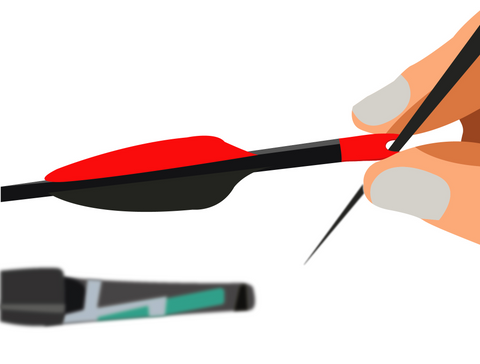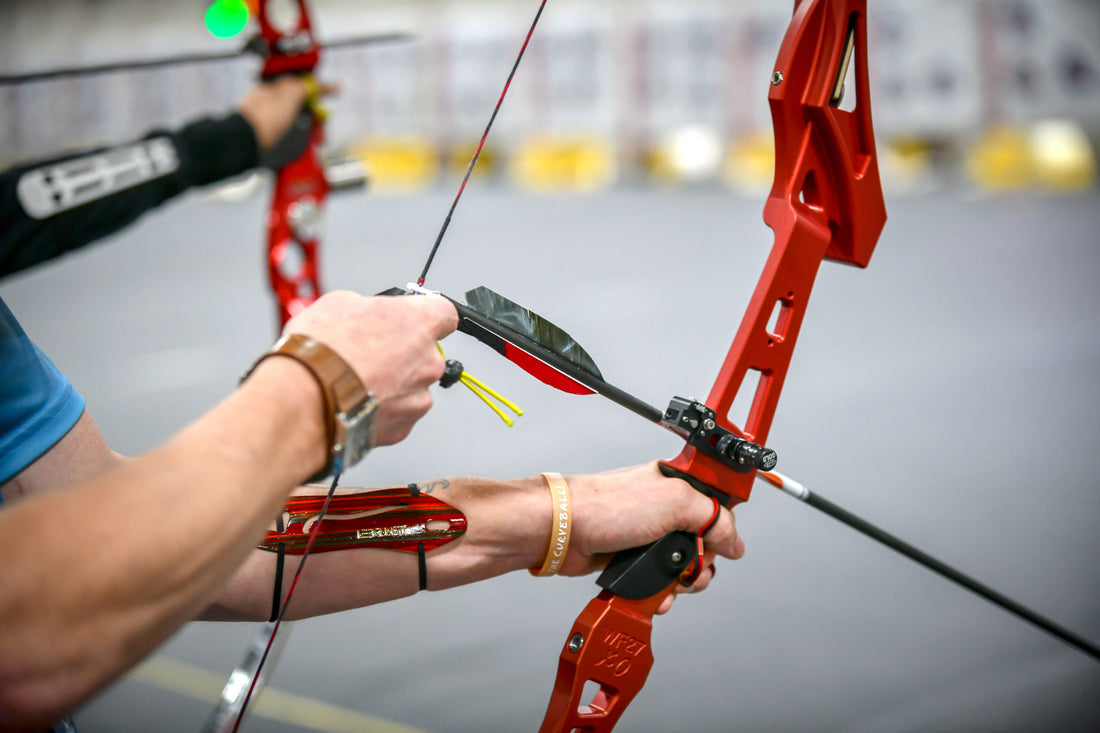If you’ve seen any medieval movies involving archers, then you might be subconsciously familiar with nocking an arrow. Most archery commanders tend to yell out three simple instructions - “draw, nock, loose!” And like clockwork, the arrows are sent flying into the sky.
Among those three instructions, “draw” and “loose” seem to be quite straightforward to understand. However, while it’s understandable if you don’t know what nocking means, it is actually quite important. So, what is nocking, and how do you do it correctly as an archer?
Arrow Nocking: An Introduction

Put simply, nocking is the act of placing your arrow on the bowstring. A well-nocked arrow will balance perfectly on the bow and provide a good base for your shot.
For a perfect understanding of arrow nocking, here are some important terminologies you should keep in mind:
- Serving: This is a thin wire that is usually wound around the bowstring. It helps to protect the string from wear and abrasion, and it covers every part of the bowstring that comes in contact with the arrow.
- Nocking point: A piece in the middle of the serving that helps you maintain consistency with arrow placement. Depending on your bow type, it can have one or two nocking points. Most compound bows come with two and in this case, the arrow is placed anywhere between both nocking points.
- Nock: A small piece of plastic that attaches your arrow to the bowstring.
- Shelf: It is the part just above the bow grip where you can “lay” your arrow as you prepare to shoot.
- Fletching: A parabolic-shaped component that helps to direct and stabilize your arrow as soon as it is fired. Fletchings can be made of feathers or vanes. While feather fletchings are flatter and more popular, vane fletchings are better in wet conditions and are less prone to wind drifts.

In truth, nocking is one of the smallest components of archery. However, it is also very important. Nocking covers your arrow’s connection to the bowstring. And when both your nock and nocking point are perfect, there is a seamless transfer of energy from the bow to the arrow that enhances your shot’s power and accuracy.
How To Nock Your Arrow
So, how do you ensure a seamless nocking process? Here are five simple steps:
Arrow placement

The first step will be to place your arrow on the shelf, the nock directed towards you. Generally, this is the part new archers might find tricky, but it gets easier with time.
You can do this in two ways - you can either place the arrow through the space between the bowstring and the riser, or you just go around the string.
When shooting in close proximity to other archers, ensure the bow isn’t in a horizontal position while doing this to avoid accidentally hitting other archers.
If you struggle at first, don’t sweat it. With enough consistency, you should get much better.
Orientation check

You also want to check the arrow’s orientation. Arrows can be attached to the bowstring in two orientations, but there’s only one right arrow orientation when nocking your arrow. An incorrect arrow orientation can cause clearance issues, decreasing your accuracy. The correct orientation for your bow depends on the bow type.
If you’re using a recurve or traditional bow, then the fletching should point away from the bow’s riser (or middle section). If your arrow fletching comes in two colors, you can nock your arrow based on the colors of the fletching. The off-colored fletching should point away from the riser while the two other fletches should be closest to the riser.
On the other hand, a compound bow is usually shot with a shoot-through arrow rest. This implies that the arrow does not rest directly against the bow but is held up by an arrow rest, and the arrow is shot from its middle. Hence, when shooting with a compound bow, the off-colored fletching should point up, avoiding any clearance issues with the arrow rest.
Place the nock

After ensuring your arrow orientation is right, the next step is to get the arrow towards the bowstring. Snap the arrow nock onto the string between the two nocking points if you use a compound bow or just beneath the nocking point if you use a recurve bow.
You might notice the arrow sliding towards the upper nocking point, but that’s not an issue. This highlights the importance of always having an upper nocking point to ensure your arrow stays in place while drawing your bow.
For rental bows that come with finger guards for protection, these finger guards can also act as nocking points. In this case, your arrow can be nocked between the two finger guards.
Solidify your nock
Simply press the arrow on the bowstring until you feel or hear a click. At this point, the arrow should stay on the string even when you take your hand off it or point the bow down.

If the arrow falls off the string, then the nock might not be a good fit for the string. You could risk dry-firing if you try to shoot a bow with a loose nock fitting. Your best solution when you notice a poor fit is to either change the arrow nocks or the string.
Rest the arrow

Finally, transfer your arrow from the shelf to the arrow rest and prepare to aim. Traditional bow archers can skip this step since these bows don't come with an arrow rest. Once this step is completed, you can aim, draw your bow, and shoot.
Conclusion

It’s easy to overlook nocking when you’re an archer. However, archers should remember that archery entails a series of processes and everything needs to be perfect from the point you take your arrow out of the quiver to the point when it leaves the bowstring.
Ensuring that your arrow is properly nocked will provide a solid foundation for a good shot. And while a lot of beginner archers may initially struggle with nocking, it sure gets better with time.
 cust@legendarchery.com
cust@legendarchery.com 302 503 5767
302 503 5767 Sauk Village IL 60411
Sauk Village IL 60411


